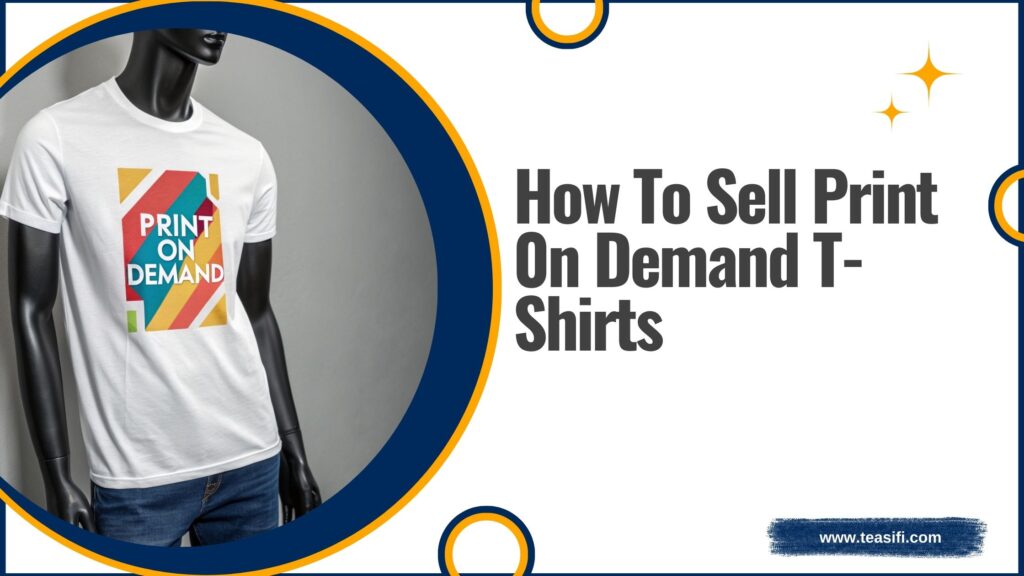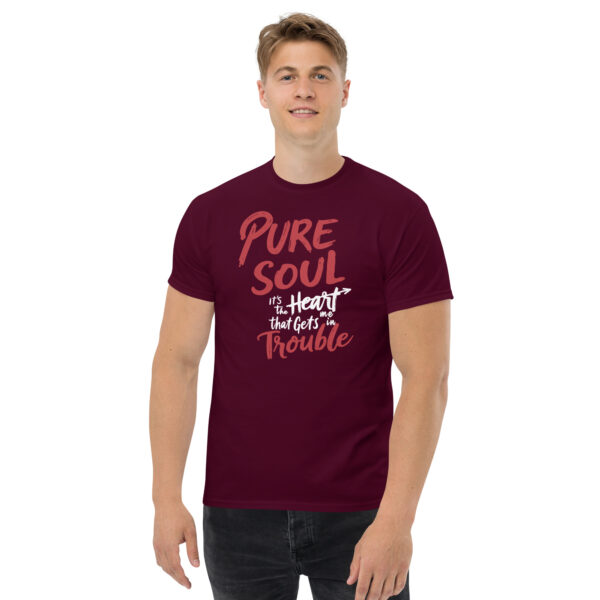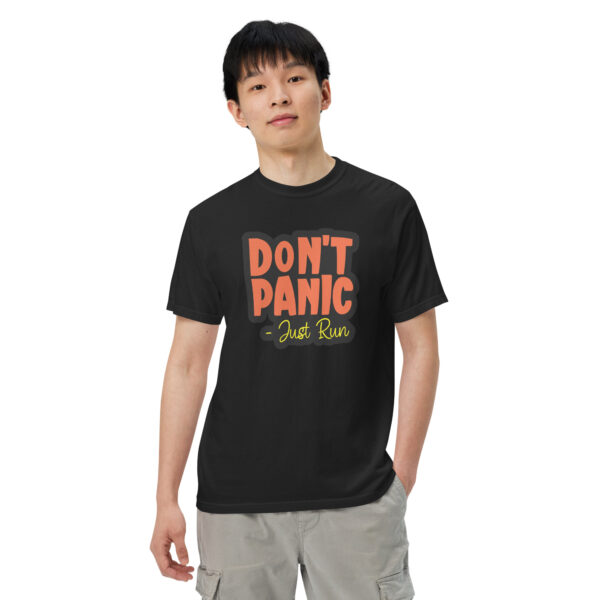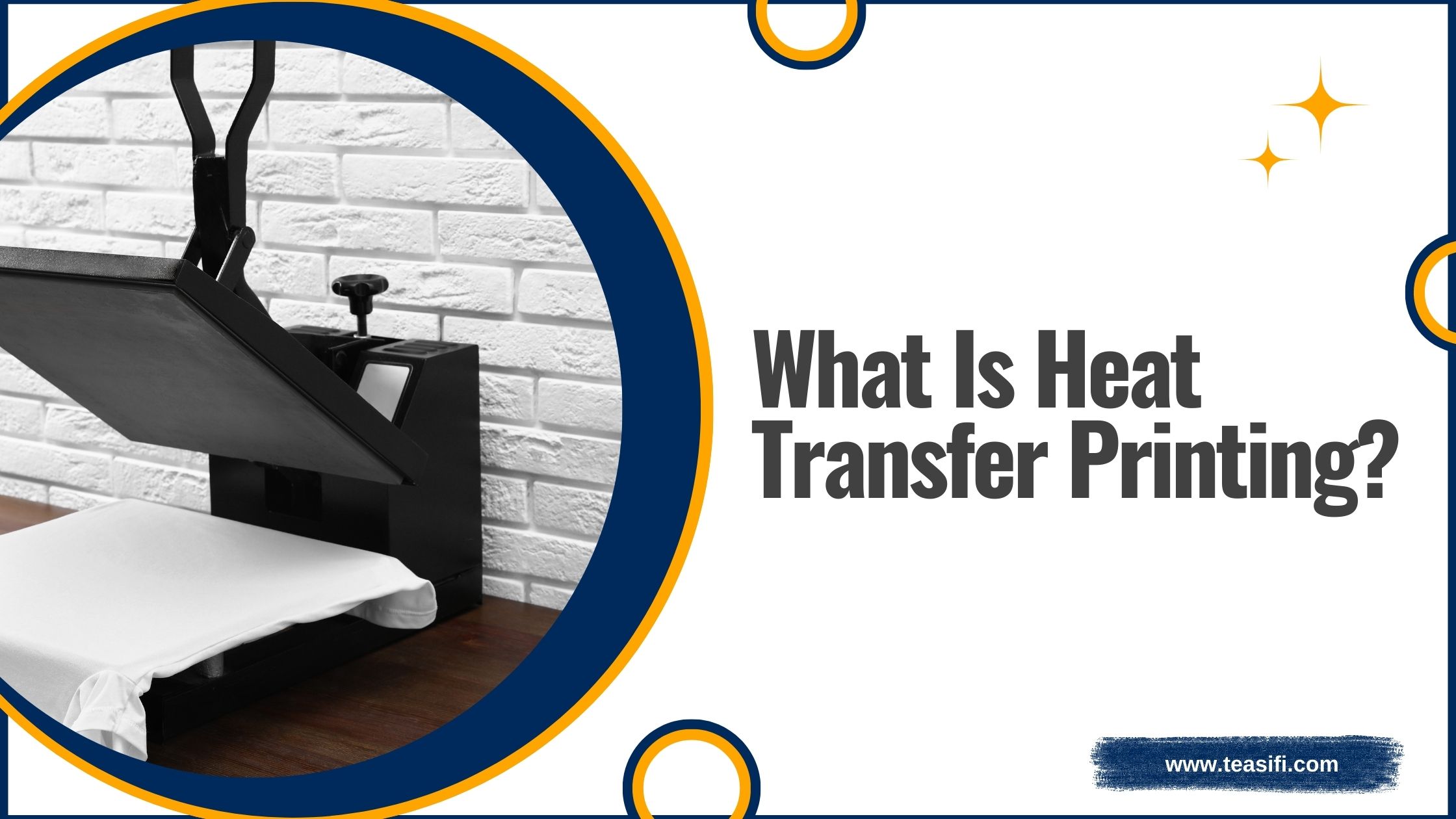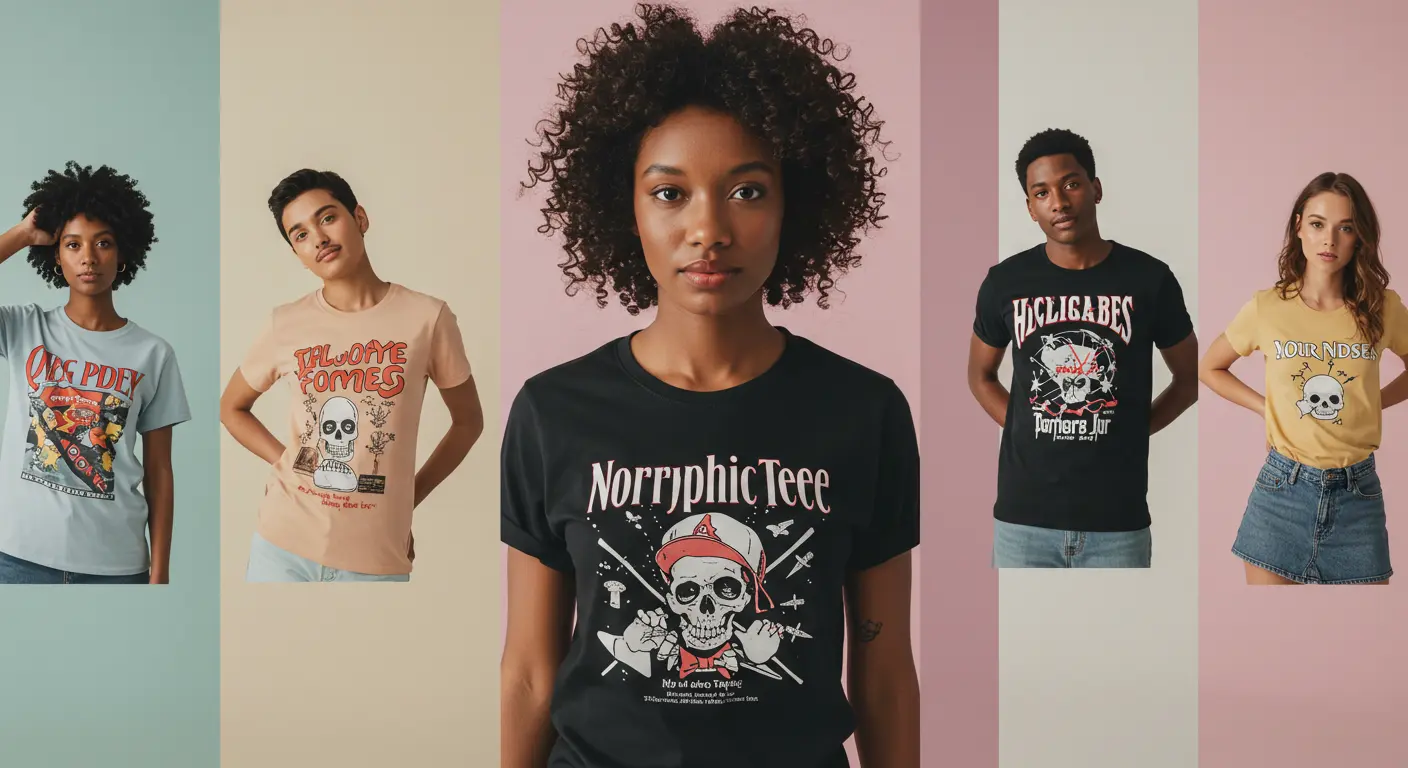Starting a t-shirt business online is easier than you might think. With a little technical know-how and the right approach, you can create a profitable and budget-friendly t-shirt business, all without the stress of managing a physical store.
Let’s go through the simple steps to launch your own print-on-demand t-shirt business.
Table of Contents
ToggleIs A T-Shirt Business Profitable?
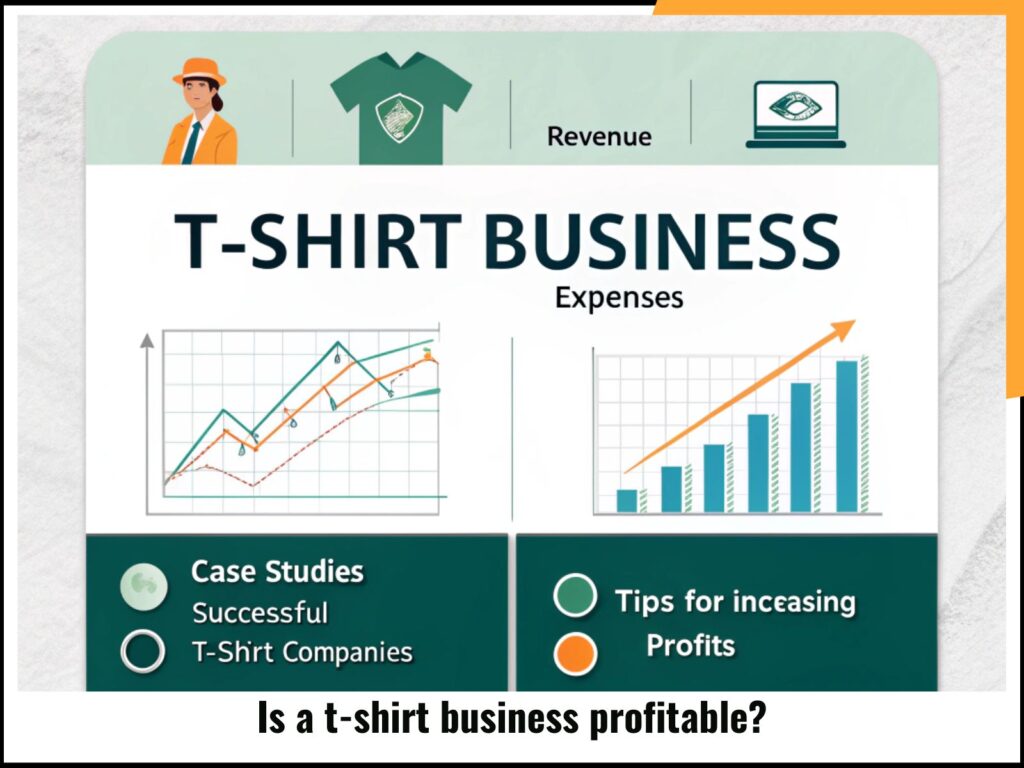
Absolutely, Running a print-on-demand t-shirt business can be a great way to earn money. The online t-shirt market is huge, worth $4.3 billion, and it’s expected to grow by over 10% by 2030.
People love custom t-shirts, whether for personal use, gifts, or business branding. Even companies are increasingly using them for marketing and promotions. In fact, in 2024, t-shirt businesses sold nearly one shirt per person worldwide.
One of the biggest advantages of starting an online t-shirt store is the low startup cost. Unlike a physical store, you don’t have to worry about rent, utilities, or stocking up on inventory.
With print-on-demand, you only produce shirts when a customer places an order, saving you money and reducing risks. Plus, you can launch your store instantly, no waiting for paperwork or finding the right location.
However, success depends on a few key factors, having great designs, offering high-quality t-shirts, and using the right strategies to market and sell your products.
Key Takeaways
- Selling t-shirts online can be a great way to make money, and you only need a few designs to get started.
- Follow a simple 10-step process to build a successful t-shirt business.
- Print-on-demand platforms like teasifi help you handle production and shipping, making it easier to run a profitable online store.
How Many Designs Do You Need To Start A T-Shirt Business?
The number of designs you need depends on your budget and target audience.
A good starting point is to have at least 5 to 10 designs when you launch your online t-shirt store.
How To Start A Print-On-Demand T-Shirt Business In 10 Steps
There’s no magic formula for success, but following these steps will help you build a strong foundation for your t-shirt business.
Step 1. Find Your Niche

Finding your niche is more than an expression, it is difficult to formaulting a winning online t shirt business plan. If your t-shirt designs don’t fill a specific niche, they will likely be lost in the highly competitive t-shirt industry.
Here are few steps you need to consider
- Think about your interests and skills.
- Research other t-shirt businesses on Amazon, Etsy, and Shopify.
- Check out social media to see what’s trending and who’s engaging with similar brands.
Visit your competitor on social platforms and analyse them.
Step 2. Understand Your Target Audience

In this step you have to know who your customers are, age, hobbies, style preferences, and what influences their buying decisions. This helps you create designs they’ll love and price your shirts competitively.
Step 3. Pick A Print-On-Demand Supplier
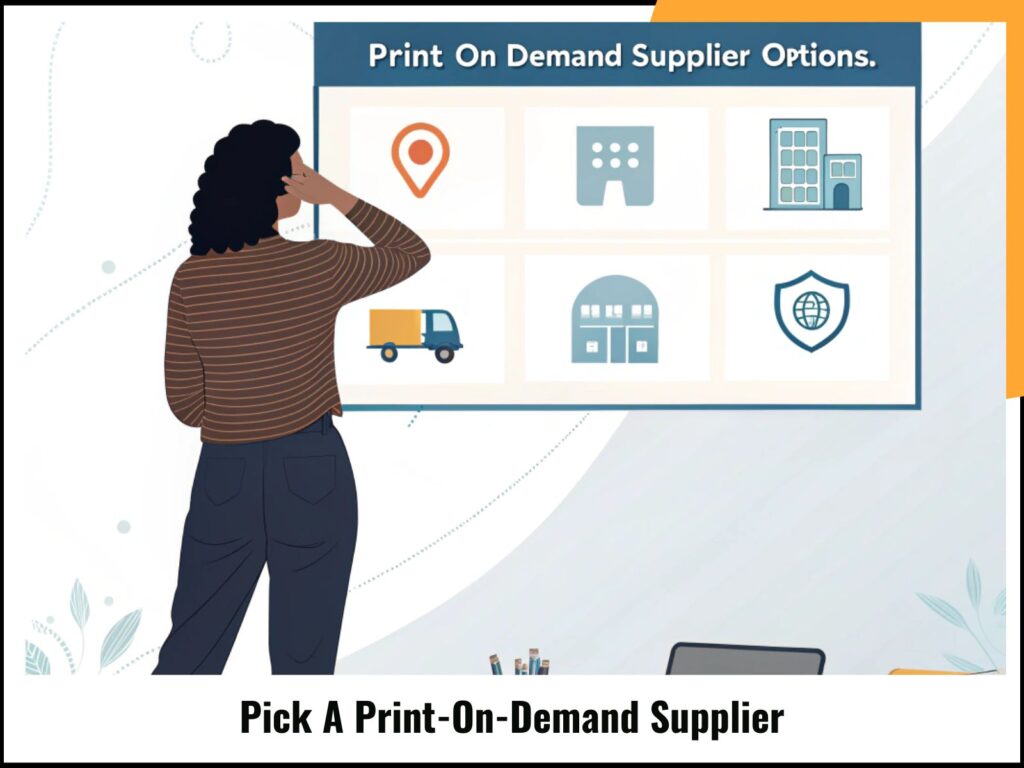
A POD service prints and ships t-shirts only when someone orders, saving you from inventory headaches.
When choosing a supplier, consider,
Pricing – Will you still make a profit after their fees?
Customer service – Do they resolve issues quickly?
Shipping locations – How fast do they deliver, and what are the costs?
Product quality – Do they offer soft, durable t-shirts in different styles?
Integrations – Can you connect their service with your store on Shopify, Etsy, or WooCommerce?
Step 4. Choose The Right T-Shirt
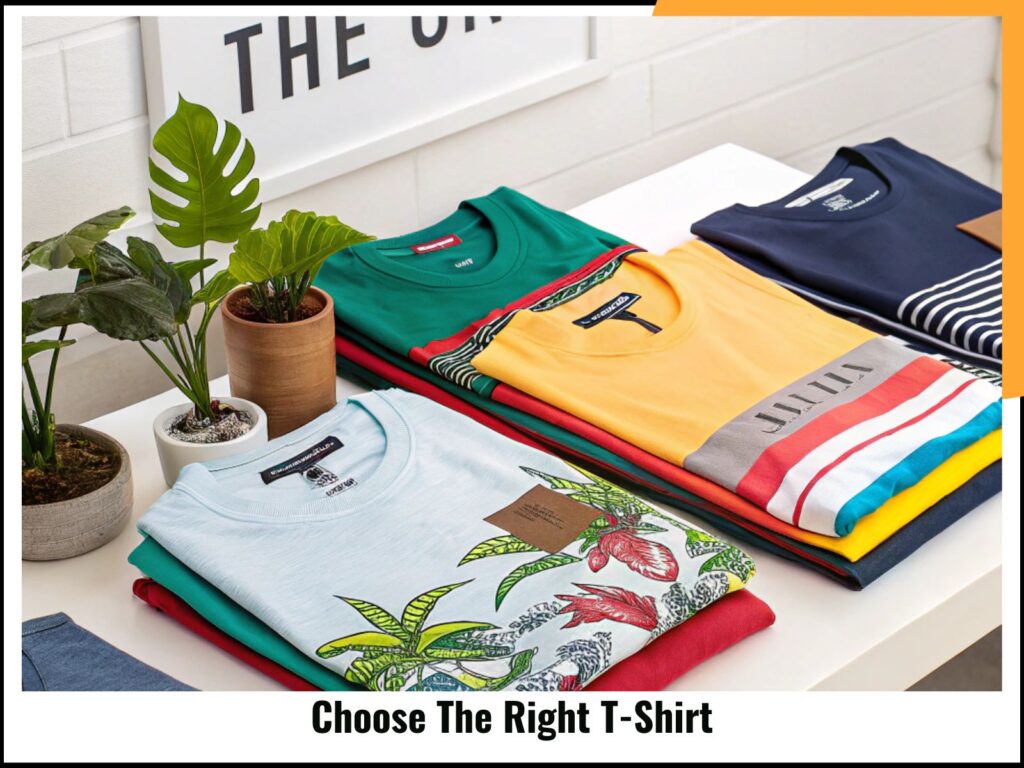
Not all t-shirts are the same, Look at these factors before choosing your base product.
Choosing The Right Fabric For Your T-Shirts
Most t-shirt sellers use cotton, polyester, or a blend of both for their designs.
Cotton is soft, breathable, and comfortable. If you’re targeting eco-friendly buyers, go for 100% organic cotton t-shirts, which are grown naturally without pesticides or chemicals.
These shirts are great for the environment and the communities that produce them. However, cotton tends to shrink and fade over time.
- Polyester holds its shape and color well, making it long-lasting. However, it can trap odors and may not be the best choice for hot weather.
- Blended fabrics combine the benefits of both materials. They are durable and comfortable but can be more expensive and sometimes inconsistent in quality.
Choosing The Right T-Shirt Weight
T-shirts come in different thicknesses, which affect their feel and durability
- Lightweight: Soft and breathable, perfect for workouts or layering.
- Midweight: A balance between comfort and durability, less prone to shrinking.
- Heavyweight: Strong and warm, ideal for colder weather or workwear.
Choosing The Right Fit
- Slim fit: Tighter and trendy, preferred by younger customers.
- Regular fit: A classic, comfortable style that suits most body types.
- Relaxed fit: Looser and more comfortable, popular among older customers.
Step 5. Creating Your T-Shirt Designs
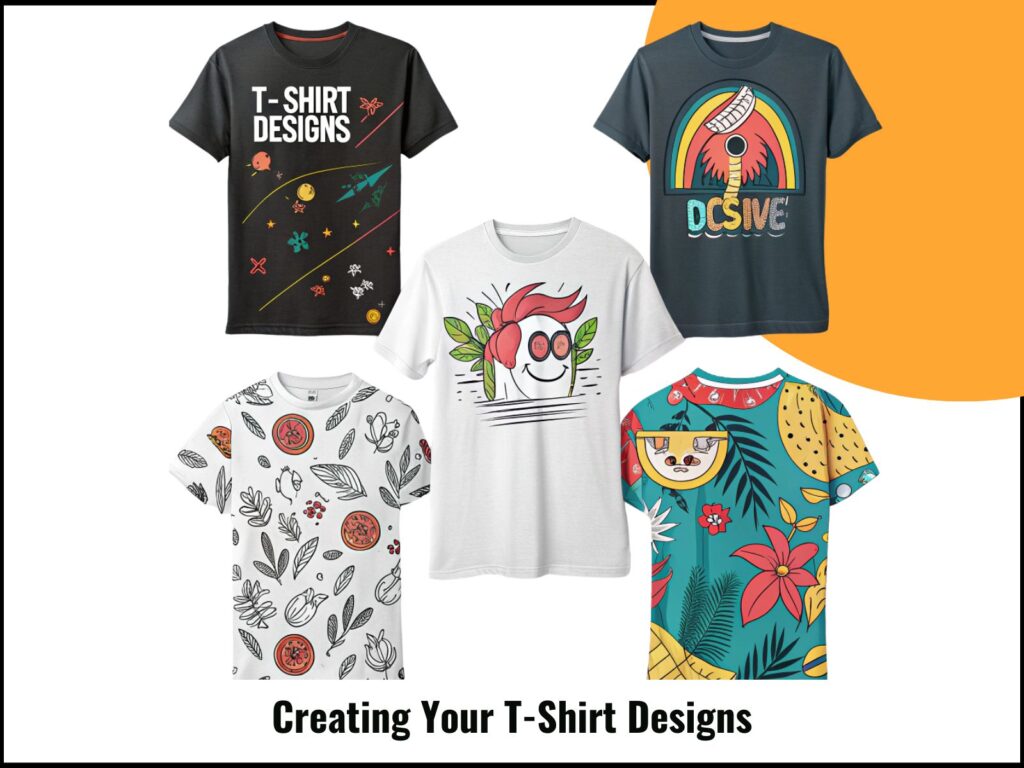
Get Inspired
Great design ideas can come from anywhere, movies, magazines, album covers, or even existing t-shirts. Stick to simple fonts and color combinations until you get a good grasp of what works.
Sketch Your Ideas
Start with rough sketches on paper, then refine them using design tools like Canva, Adobe Illustrator, or Gelato+. If design isn’t your strength, consider hiring a professional designer to bring your ideas to life.
Mock Up Your Designs
Before printing, create digital mock-ups to see how your design looks on a t-shirt. Tools like the Design Editor let you preview your artwork on different shirt styles and body types.
Order Samples
Once your design is finalized, order samples from your print-on-demand supplier. This helps you check the print quality and material before selling. Use these samples to take high-quality photos for your store, great images can make a big difference in sales!
Step 6. Get Feedback on Your Designs

Before launching, test your designs
- Share them on social media (with a watermark to protect your work).
- Ask friends and family for honest opinions.
- Wear your own designs to events and see if people ask where they can buy them.
- If your designs get positive reactions, you’re on the right track!
Step 7: Choose Where To Sell Your T-Shirts
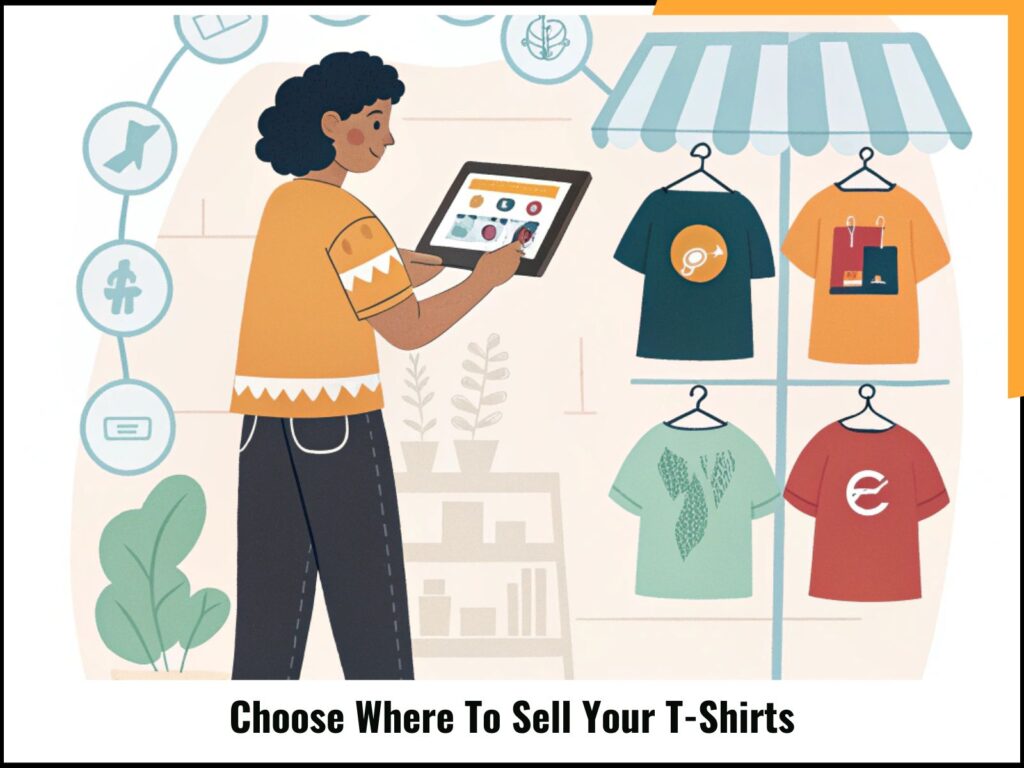
You need a platform to sell your t-shirts online. Here are your options
- Your own website – Offers full control but requires more effort to attract customers.
- Social media stores – Sell directly on Instagram, Facebook, or TikTok, but customization is limited.
- Ecommerce platforms – Marketplaces like Etsy, Amazon, Shopify, and WooCommerce give you access to buyers but may charge fees and limit branding options.
Step 8: Set Up Your Online Store

Pick a domain name that’s easy to remember. If you’re using an ecommerce platform, customize your store’s design to match your brand identity with a strong logo, colors, and layout that makes shopping easy.
Step 9: Add Your Products & Launch Your Business

Upload high-resolution product images
Write compelling product descriptions – Mention fabric type, fit, and unique selling points (like organic cotton).
Integrate with your print-on-demand supplier so orders are fulfilled automatically.
Step 10: Promote Your T-Shirt Business

- Use Social Media – Post on Instagram, TikTok, and Pinterest to showcase your designs.
- Collaborate with Influencers – Partner with people who have an audience that fits your niche.
- Email Marketing – Send updates on new designs and special discounts.
- Run Ads – Paid ads on Google and social media can help attract buyers.
Sell Custom T-Shirts Online With Teasifi Print-On-Demand Services
Building a successful print-on-demand t-shirt business takes more than just a few clicks, but by following the right steps, you’ll be on your way to online success.
Start by creating a solid business plan and partner with a reliable print-on-demand provider like Teasifi to test your initial designs.
As you refine your niche and understand your customers’ preferences, you can expand your product line using teasifi extensive catalog, all without the need for large upfront investments.
Why Choose Our Website Over Other Print-On-Demand Suppliers?
Teasifi stands out by offering localized production on a global scale. With 100+ production partners in 20 countries, we provide one of the world’s largest networks for on-demand manufacturing.
This ensures faster delivery times, reduced carbon footprint, and high-quality products wherever your customers are.
Discover how easy it is to start selling custom t-shirts online with teasifi today!
FAQ: How to Start Your Own Online T-Shirt Business
Q1: How do I start my own online T-shirt business?
Starting an online T-shirt business involves a few key steps: choosing a niche, designing your shirts, selecting a printing method (print-on-demand or bulk printing), setting up an online store, and marketing your products. Platforms like Shopify, Etsy, and Teespring make it easy to launch your business with minimal upfront costs.
Q2: What are the best platforms for selling T-shirts online?
The best platforms depend on your business model. Shopify is great for creating your own store, Etsy is ideal for handmade or unique designs, Amazon Merch allows you to sell without handling inventory, and Redbubble is a good option for print-on-demand. Choose a platform that aligns with your marketing strategy and budget.
Q3: What is the best print-on-demand service for T-shirt businesses?
Popular print-on-demand services include Printful, Printify, Teespring, and Redbubble. Each has different pricing, printing quality, and product options. Printful offers high-quality prints and integrations with Shopify, while Printify provides multiple printing partners for cost flexibility.
Q4: How much does it cost to start an online T-shirt business?
Starting costs vary depending on your approach. Using a print-on-demand service requires little to no upfront investment, while bulk printing and storing inventory can cost $500 to $5,000 depending on order size. You’ll also need to budget for a website, marketing, and design tools.
Q5: Do I need a website to sell T-shirts online?
No, but having a website increases credibility and control over your brand. If you prefer a marketplace, you can sell on Etsy, Amazon, or Redbubble without a personal website. However, platforms like Shopify or WooCommerce allow for more customization and branding.
Q6: What are the most popular T-shirt printing methods?
The three main printing methods are:
Screen printing – Best for bulk orders; high quality but costly for small runs.
Direct-to-garment (DTG) – Ideal for print-on-demand; high-detail prints but slower production.
Heat transfer (sublimation & vinyl) – Good for custom, small-batch orders; lower durability than screen printing.
Q7: How can I create T-shirt designs if I’m not a designer?
You can use Canva, Adobe Illustrator, or Photoshop to create designs. Alternatively, hire freelancers from Fiverr or Upwork or buy pre-made designs from marketplaces like Creative Market or Vexels. Print-on-demand services also offer design tools with ready-to-use graphics.
Q8: What are the best T-shirt niches for an online business?
Profitable T-shirt niches include:
- Funny & meme-based designs
- Fitness & gym motivation
- Pet lovers (dogs, cats, etc.)
- Social causes & activism
- Hobby-based (gaming, hiking, photography, etc.)
A strong niche helps differentiate your brand and attract a loyal audience.
Q9: How can I market my online T-shirt business?
Use social media marketing, influencer collaborations, SEO, and paid ads to promote your T-shirts. Platforms like Instagram, TikTok, and Facebook work well for visual products. Running targeted ads and using email marketing can also boost sales.
Q10: Is a print-on-demand T-shirt business profitable?
Yes, but success depends on niche selection, design quality, pricing, and marketing. Since print-on-demand services charge per item, profit margins are typically $5–$15 per shirt. To increase profitability, offer upsells, bundles, and premium designs.
Q11: What are the biggest challenges of starting an online T-shirt business?
- High competition – Unique designs and strong branding help stand out.
- Low profit margins – Choosing the right pricing strategy is crucial.
- Marketing costs – Organic marketing strategies like social media and SEO can help reduce ad expenses.
- Finding reliable suppliers – Research print-on-demand companies to ensure quality and timely delivery.

